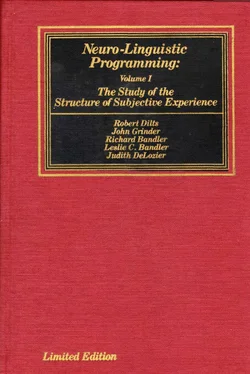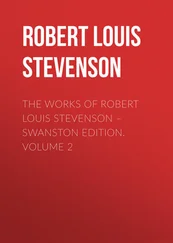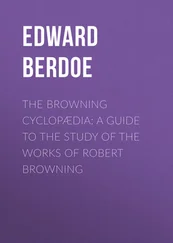Words, as we have pointed out, are anchors for 4–tuples of experience and only have meaning for us in terms of the experiences they elicit. Persons with an auditory digital step in their reading strategies must say the words to themselves before they will have any meaning (before they access the relevant stored experience). The strategy goes:

The speed reader's strategy goes directly from seeing the written word to accessing the internal 4–tuple:

For most people who subvocalize or verbalize the word internally, the synesthesia pattern becomes so strong that they actually can't understand written language just by looking at it — they must say it to themselves (transform it to auditory digital) before it makes any sense; otherwise it may as well be in a foreign language.
Although the strategy involving the verbalization step is a fine strategy for the outcome of sight reading aloud, (which is generally reinforced in grammar school), it is inefficient for reading quickly. It is possible to see whole sentences and paragraphs at once, but internal verbalizing requires pronouncing words in sequence, one at a time, and the information gathered by such a procedure is redundant since it contains the same digital information already present in the written material. For the outcome of rapid reading the sight reader's strategy would need to be streamlined by pulling out the unnecessary A i dstep. This will generally involve the rehearsal and development of a synesthesia pattern working directly from V e d.
Speed reading courses generally have you rehearse the speed with you gather the visual information, but do not work directly with the strategy. Of the people we've talked to who have taken speed reading courses, those who already have the V e→

synesthesia pattern as an existing natural resource benefit the most from the training. Readers who have a strong V e→A i d, synesthesia pattern learn to look at the words faster but become very frustrated at their high loss of comprehension, until they've stuck with the process long enough to reprogram the strategy themselves. The effectiveness of speed reading courses is tied to their tendency to force the reader to establish a V e dsynesthesia pattern, because the reader doesn't have time to say the words internally. For the highly auditory reader, however, this essentially involves relearning the language which can be very difficult. The process is much easier when the individual rehearses the new strategy at the same time he or she is learning the mechanics of speed reading. In the Installation Section of this book we will provide methods you can use to assist with the installation and development of various synesthesia patterns.
Another possible method of streamlining, depending on the kind of strategy you are dealing with, is to have the individual simply practice the component parts of the strategy more and more until they become chunked as an unconscious TOTE. It is also possible to switch the modifiers between the steps in the strategy so that it works more efficiently (i.e., switching a polarity response to a congruent response).
5.2 Redesigning Maladaptive Strategies and Outcomes.
In cases where strategies produce outcomes maladaptive for the contexts in which they occur, the programmer will modify the strategy or design a new one such that a more appropriate outcome is reached.
Phobias are interesting examples of such cases. A phobic response is an outcome of a strategy that was most likely adaptive for the individual at the establishment of the behavioral pattern. The negative kinesthetic response and withdrawal were probably important for the survival of the individual at some time because of other elements in the situation. And even though the quick phobic response will always insure survival, it becomes problematic in contexts where it is unnecessary or unwanted. More appropriate responses, such as uptime and alertness, are more efficient at insuring adaptive outcomes.
Certain phobic responses are established when a very negative outcome, a result of the specific circumstances of an experience, becomes anchored to a certain situation or behavior that is then generalized to later situations or behaviors. Whenever the person is in a similar situation the negative experience is accessed, although there is no actual danger of a reoccurrence of the negative outcome.
One of the authors once worked with a woman who had a phobia of balloons. Using the elicitation procedures described earlier in this book, the author uncovered the following sequence of of representations: The person, a woman in her mid–twenties, would see a balloon externally (V e); this would trigger a rapid unconscious visual image (V r) of a scene that occurred when she was a child at a birthday party where a balloon had burst in her face; this would anchor up strong negative visceral feelings (K i -) and she would attempt to get away (K e) from the balloon she was seeing externally.
Her strategy, then, went: V e→V i→K i -→K e.
The remembered visual image of the scene from the past and the negative feelings led to an outcome which, though it may have been appropriate at the party when she was a child, was no longer useful. It was evident to the author that, in order for her to have a more effective strategy, the woman needed a more appropriate and effective test with which to assess her present environment when in the presence of balloons. This would involve the design of a more accurate external visual check.
In place of the visual image of the scene from the past, the author installed, through anchoring and rehearsal (see the next chapter for installation procedures) an internal voice that said, "Look and see if it is going to pop." From this A i dstep she would then look again externally at the balloon in her immediate environment and the surrounding context to see if there was any chance that the balloon might pop (V e). If there was, the voice would tell her to step back (K e) a safe distance (as opposed to running away as she had done earlier) so that it would not pop in her face. If she wasn't sure, the voice would tell her to take one step back and look again more carefully. If she could see there was no chance of the balloon popping, the voice would tell her that it was okay to relax and feel comfortable (K i).
This strategy contains a new test (V e), a new set of operations and a new decision point (A i d):

After rehearsing and testing the strategy a few times in the presence of the author, the woman was able to completely banish her former phobia of balloons.
5.21 Designing Context Markers and Decision Points.
In some cases, where an older existing outcome and accompanying strategy have become inappropriate for a majority of circumstances, they may still remain effective for some contexts (even though these contexts may be extremely rare). The programmer will then want to leave the individual with the choice of accessing the old strategy as well as the new one. In these cases the programmer will want to install a test or decision point in which some representation serves as a context marker to indicate in which situations which strategy is appropriate. If such a measure is not taken, interference may occur as a result of ambiguities or overlap between the two contexts, which will tend to access both strategies at the same time. The person may not know which strategy to apply and may become immobilized by responding to both strategies simultaneously. Something tells him to do one thing but another looks or feels as if it would be more appropriate.
Читать дальше















